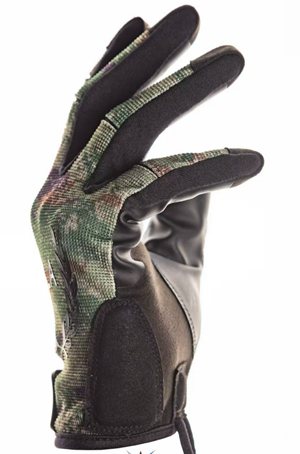
What Are Cut Resistant Gloves?
A Complete Guide to Protecting Your Hands
Introduction: Why Hand Safety Matters
Our hands are our most important tools. From cooking and crafting to handling sharp objects at work or during tactical missions, they’re constantly exposed to risks. Minor cuts may seem small, but they can lead to pain, infections, or lost time in critical situations.
That’s why cut resistant gloves are so valuable. They’re designed to protect your hands from accidental cuts and scrapes while letting you work with precision and confidence.
In this guide, you’ll learn:
What cut resistant gloves are
How they’re made and rated
Everyday scenarios where they’re useful
How they’re applied in military and combat environments
How to choose the right pair
Care tips to make them last longer
What Exactly Are Cut Resistant Gloves?
Cut resistant gloves are protective gloves engineered to minimize the risk of injury when handling sharp tools, weapons, or hazardous materials. Unlike regular cotton or leather gloves, these are made with special fibers that create a strong barrier against cuts.
How They Work
They’re like flexible armor for your hands. Most are crafted from:
Kevlar® – durable, heat-resistant fiber used in combat gear.
HPPE (High-Performance Polyethylene) – lightweight yet incredibly strong.
Stainless steel or glass fibers – woven with soft yarns for added cut resistance.
These fibers spread the force of a blade across the glove, preventing it from slicing through.
Understanding Cut Resistance Levels
To help users select the right protection, cut resistant gloves are rated under ANSI (American National Standards Institute) or EN388 (European Standard):
Low Level (ANSI A2–A3 / EN388 Level 2–3): Protection for light, everyday tasks.
Medium Level (ANSI A4–A5 / EN388 Level 4–5): Stronger resistance for frequent use of sharp tools or tactical gear.
High Level (ANSI A6+): Designed for industrial, law enforcement, and military-grade tasks.
💡 For military or combat roles, higher-level gloves (A5–A6+) are often recommended, balancing mobility with maximum protection.
Everyday Uses for Cut Resistant Gloves
At Home
Cooking, gardening, or DIY projects often involve knives, blades, or tools that can easily slip. Gloves provide peace of mind for these daily tasks.
At Work
Industries like food prep, construction, glass handling, or packaging require constant contact with sharp edges. Gloves keep workers safe and productive.
Military and Combat Applications
In military and tactical settings, cut resistant gloves are more than just convenience—they’re critical for survival and mission success.
Combat and Field Operations
Soldiers handle knives, bayonets, and combat tools where quick movements and force are essential. Gloves help reduce the risk of hand injuries during close-quarters combat or while using sharp survival gear.
Tactical Maneuvers
Special operations forces often move through environments filled with glass, barbed wire, or jagged metal. Cut resistant gloves protect hands when climbing obstacles, breaching barriers, or navigating hostile terrain.
Weapons Handling
Firearms maintenance, disassembly, and reassembly involve small, sharp components. Gloves reduce the risk of cuts without compromising dexterity.
Survival and Rescue Missions
In situations requiring rope handling, digging, or cutting through debris, gloves shield hands from both cuts and abrasions.
Key Features for Military and Tactical Use
High Cut Resistance – Military gloves often meet ANSI A5+ for maximum protection.
Heat Resistance – Kevlar-based gloves can withstand heat and sparks, ideal for combat zones.
Grip – Textured palms ensure a firm hold on weapons or tools, even in wet conditions.
Dexterity – Precision is crucial; gloves must allow quick reloading or blade handling.
Durability – Reinforced stitching and materials withstand harsh field conditions.
Myths vs. Reality
❌ “Tactical gloves limit speed.”
✔️ Modern designs combine thin yet strong fibers, so soldiers maintain agility.
❌ “Only industrial workers need them.”
✔️ Law enforcement and military personnel rely on them for both safety and tactical advantage.
Care and Maintenance
Just like any piece of protective gear, gloves last longer with proper care:
Clean according to manufacturer’s instructions (some are machine washable, others hand-wash only).
Air dry instead of heat drying to preserve fibers.
Inspect regularly for wear, thinning, or holes.
Quick Buyer’s Guide
Everyday home use: Lightweight, breathable HPPE gloves (Level A3).
Workplace safety: Medium cut protection with good grip (Level A4–A5).
Military and tactical use: High cut resistance (A5–A6+), heat-resistant, reinforced gloves designed for combat conditions.
Cost: ranges from $10 for simple pairs to $50+ for advanced tactical gloves.
The Confidence Factor
Whether you’re preparing food, working on a craft, or on a mission in unpredictable conditions, cut resistant gloves add both safety and confidence. They reduce hesitation and allow you to focus on the task at hand.
Conclusion: Protect What Matters Most
Your hands are essential for every part of life—whether at home, at work, or in combat. Cut resistant gloves are more than just protective gear; they’re a safeguard for your most valuable tools.
Think of them as affordable insurance: small, practical, and powerful enough to prevent injuries that could slow you down in everyday life or put you at risk in critical military operations.
So the next time you’re about to use a sharp tool—or prepare for a mission—ask yourself: Am I protecting my hands as well as I should?